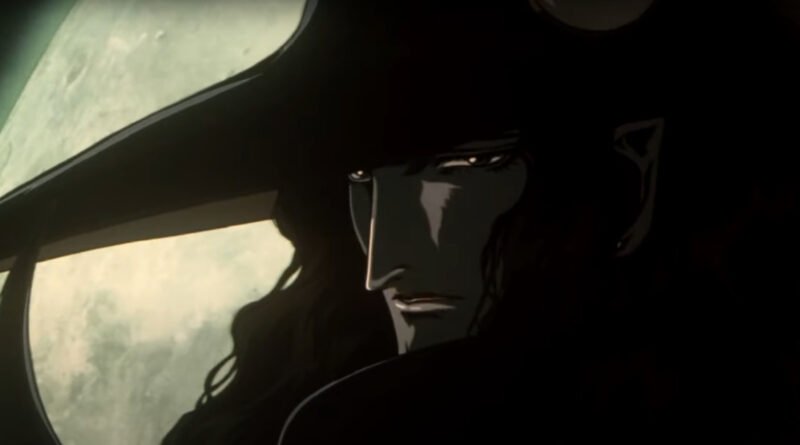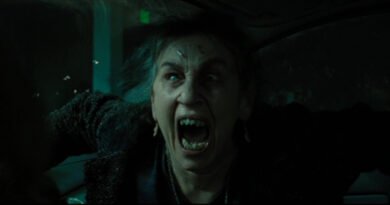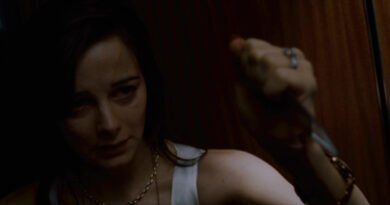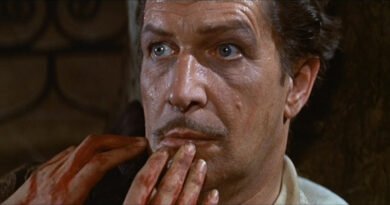Vampire Hunter D: Bloodlust (2000): Gothic Action and Dark Beauty

Title: Vampire Hunter D: Bloodlust (2000)
Writer(s): Hideyuki Kikuchi, Yoshiaki Kawajiri
Director: Yoshiaki Kawajiri
Main Cast: Actor (Character): Andrew Philpot (D), Pamela Segall (Leila), John Rafter Lee (Meier Link), Wendee Lee (Charlotte), Mike McShane (Benge), Dwight Schultz (Left Hand)
Synopsis
Set in a far-future, post-apocalyptic world where vampires rule the night and bounty hunters roam the wastelands, Vampire Hunter D: Bloodlust follows the enigmatic half-human, half-vampire known only as “D”. He is hired to rescue a human woman, Charlotte, who has been seemingly abducted by a vampire noble named Meier Link. As D pursues them, he faces rival hunters, supernatural foes, and must confront deeper questions of love, loyalty, and the nature of monstrosity.
What Works
Visually, the film is stunning. Its gothic art style and detailed animation create a world that is as lush as it is bleak. The character and monster designs are imaginative and steeped in dark romanticism, showcasing the distinct touch of director Yoshiaki Kawajiri.
The story, though relatively straightforward, is elevated by strong character dynamics and a tone that blends action, melancholy, and philosophical reflection. D is a compelling protagonist—stoic and tragic—and his interactions with his sardonic symbiotic Left Hand add much-needed levity and insight.
The English dub, unusually for anime of the time, is well-performed and emotionally resonant, particularly Andrew Philpot’s reserved portrayal of D and John Rafter Lee’s nuanced performance as Meier Link. The soundtrack by Marco D’Ambrosio complements the film perfectly, shifting from haunting to heroic as needed.
There’s also a rich undercurrent of thematic depth, exploring ideas of prejudice, forbidden love, and what it means to retain one’s humanity in a world ruled by monsters.
What Doesn’t Work
While the narrative has emotional beats, it can feel episodic at times, with side characters introduced and dispatched quickly. This sometimes interrupts the pacing and diminishes the stakes of certain encounters.
Some viewers unfamiliar with the source material or previous instalment may find the lore underexplained. Additionally, while the animation is generally excellent, a few transitions and action sequences feel dated compared to contemporary standards.
Final Thoughts: Does It Hold Up?
Yes—Vampire Hunter D: Bloodlust has aged well, particularly for fans of dark fantasy and anime with mature storytelling. Its blend of western, horror, and gothic sci-fi elements remains unique. Though it belongs to a niche genre, it holds its place as a cult classic that continues to find new admirers.
Who Would Enjoy This Episode?
- Fans of gothic anime, dark fantasy, and vampire lore.
- Viewers who appreciate philosophical undertones and tragic romance.
- Anime enthusiasts who enjoy rich world-building and cinematic visuals.
- Fans of films like Castlevania, Hellsing, or Berserk.
Who Might Not Enjoy It?
- Those seeking light-hearted or comedic anime.
- Viewers who prefer fast-paced, straightforward narratives.
- Audiences uninterested in romantic or melancholic themes.
Final Verdict
Vampire Hunter D: Bloodlust is a gorgeously animated and emotionally resonant journey through a gothic wasteland. It offers a unique blend of horror, action, and romantic tragedy, solidifying its status as a standout anime film that appeals to both genre fans and newcomers alike.




